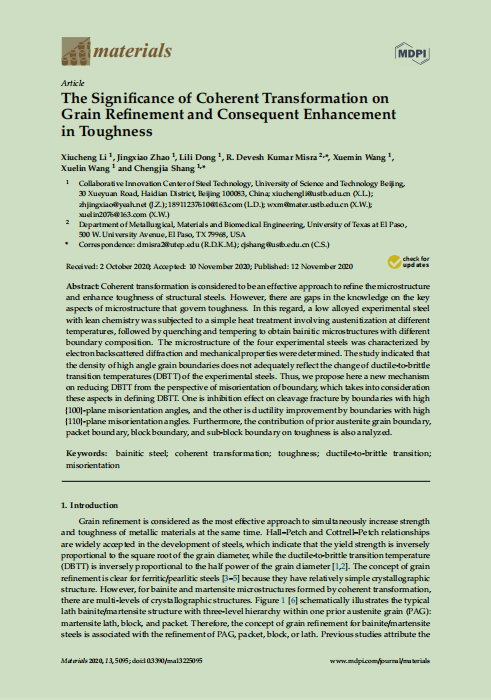Coherent transformation is considered to be an effective approach to refine the microstructure and enhance toughness of structural steels. However, there are gaps in the knowledge on the key aspects of microstructure that govern toughness. In this regard, a low alloyed experimental steel with lean chemistry was subjected to a simple heat treatment involving austenitization at different temperatures, followed by quenching and tempering to obtain bainitic microstructures with different boundary composition. The microstructure of the four experimental steels was characterized by electron backscattered diffraction and mechanical properties were determined. The study indicated that the density of high angle grain boundaries does not adequately reflect the change of ductile-to-brittle transition temperatures (DBTT) of the experimental steels. Thus, we propose here a new mechanism on reducing DBTT from the perspective of misorientationof boundary, which takes into consideration these aspects in defining DBTT. One is inhibition effect on cleavage fracture by boundaries with high {100}-plane misorientation angles, and the other is ductility improvement by boundaries with high {110}-plane misorientation angles. Furthermore, the contribution of prior austenite grain boundary, packet boundary, block boundary, and sub-block boundary on toughness is also analyzed.
